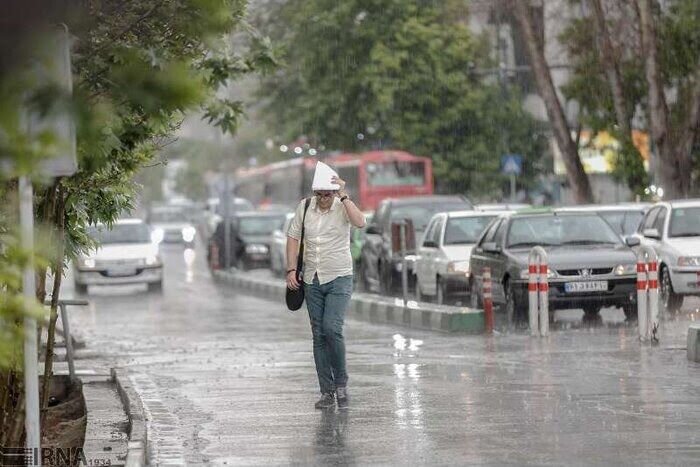Precipitations close to normal after four years

TEHRAN –After four years of consecutive low precipitations, the amount of average rainfall is getting close to normal long-term figures, the head of Metrological Organization has said.
“Currently, the country is witnessing less than one millimeter, about 0.3 percent, short of long-term rainfall,” IRIB quoted Sahar Tajbakhsh as saying.
According to available statistics, South Khorasan, Sistan-Baluchestan, and Yazd provinces have so far received more than 30 percent of the long-term rainfall in the current water year that began on September 23, 2023), she added.
Other provinces like Ardabil, Isfahan, Ilam, North Khorasan, Khuzestan, Qom, Kordestan, Kermanshah, Golestan, and Mazandaran have experienced between 2 up to 29 percent more than normal rains.
However, East Azarbaijan, West Azarbaijan, Alborz, Bushehr, Tehran, Chaharmahal-Bakhtiari, Khorasan Razavi, Zanjan, Semnan, Fars, Qazvin, Kerman, Kohgiluyeh and Boyer-Ahmad, Gilan, Markazi, and Hormozgan provinces have received between 1 and 30 percent less rainfall than normal.
Tehran, Semnan, and Qazvin provinces have received the lowest amount of precipitation.
The long-term average recorded last year was equal to 141 mm, Ahad Vazifeh, head of the national center for drought and crisis management, said on March 11.
Fars, Hormozgan, Kerman, Semnan, Khorasan Razavi, Qazvin, Alborz, Tehran, Lorestan, and Kohgiluyeh–Boyerahmad provinces have had low rainfall.
Kerman, Qazvin, Tehran, and Alborz provinces received 50, 39, 33, and 34 percent less rainfall than the long-term average, he added.
Vazifeh went on to say that the average temperature of the country has been 13.3 °C since the beginning of fall, September 23, which compared to the three-year period figure,11.3 °C, shows the temperature has increased by 2 °C over time.
Since the beginning of winter, the temperature has been 9.1 degrees, while it had been 7.1 degrees in long-term average. The last two months of the fall this year were the hottest months on record in the past 50 years, Vazifeh added.
El Niño-driven floods
El Niño was the primary driver of extreme rainfall in April and May that caused widespread flash flooding across Iran, as well as Afghanistan and Pakistan, doubling the chance of extreme rainfall, a new World Weather Attribution study found.
Throughout April and May, West Asia was hit by several storms. Flash floods killed at least 500 people in Afghanistan, 124 in Pakistan, and 18 in Iran, destroyed thousands of homes, and wiped out crops, worsening food shortages and threatening agricultural livelihoods.
WMO reports on Iran
On April 23, the World Meteorological Organization (WMO) released a report on extreme events such as floods, drought, dust storms, and strong winds that affected the country, ISNA reported.
According to the report, below-normal rainfall in most regions of Iran for the third consecutive year in 2023 has led to widespread drought in the country.
The eastern half experienced severe rainfall shortage within the year. Decreased rain and severe drought in the region along with above-normal temperatures have resulted in the drying up of the main inland lakebed, the Hamoun Lake.
In Iran, autumn 2023 was much warmer than normal with severe shortages of rainfall throughout the country, the report added.
Severe dust storms hit most parts of Asia. In mid-September, a dust storm affected Iran, Afghanistan, and Pakistan causing serious health problems.
High winds in the southeast of the country from September 18 to 25, caused severe dust storms resulting in severe injuries and hospitalization.
Levar wind along with the dust from dried Hamoun wetland affected the region, causing adverse health effects, closure of schools, transportation hazards, and damage to crops.
According to the report, the flood that struck Astara city from September 17 to 19 significantly affected 300 households. The flood resulted from intense and prolonged rainfall in Astara on September 18. Within a span of 12 hours, 220 mm of rain was recorded causing profound damage.
MT/MG
Leave a Comment